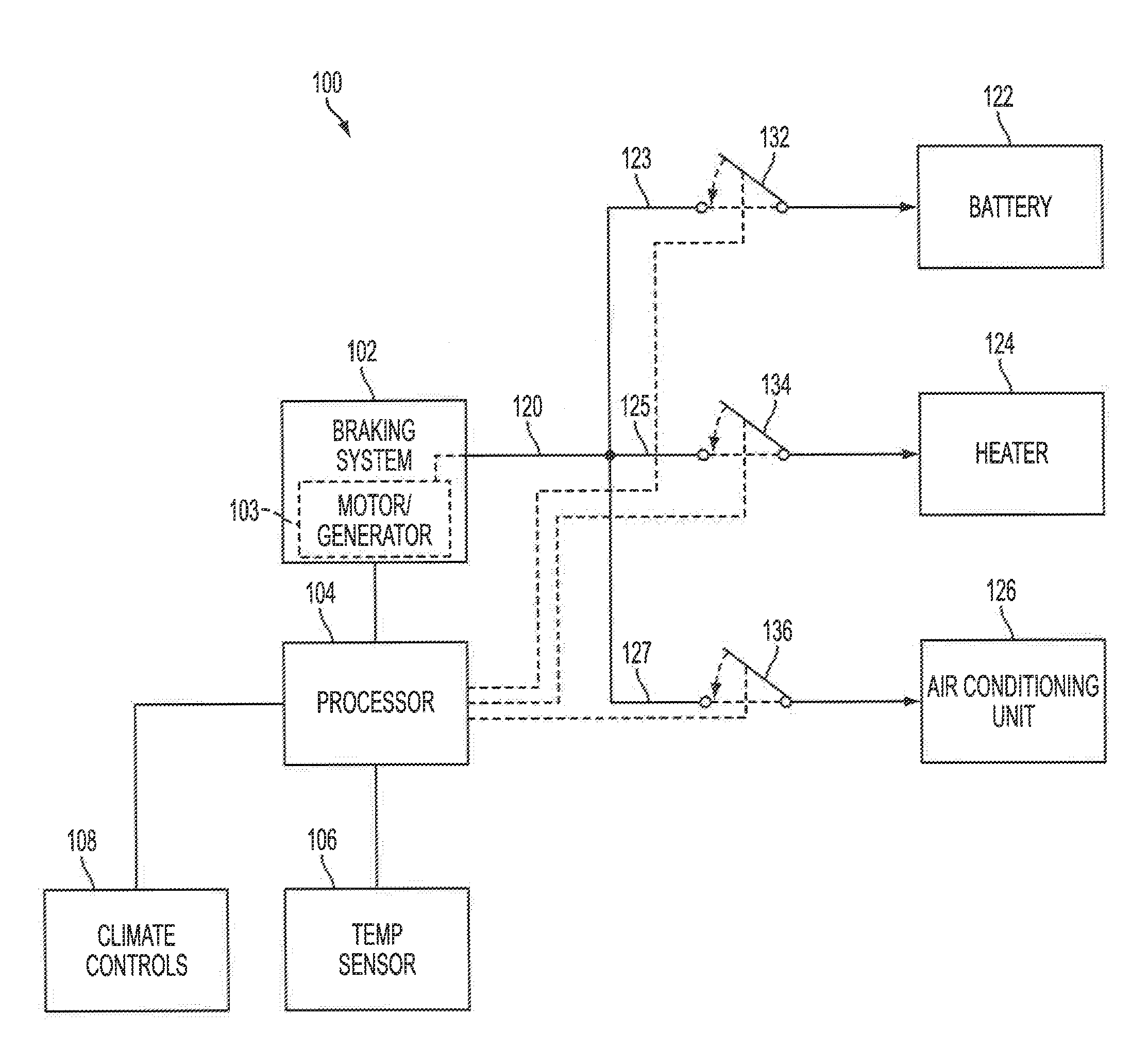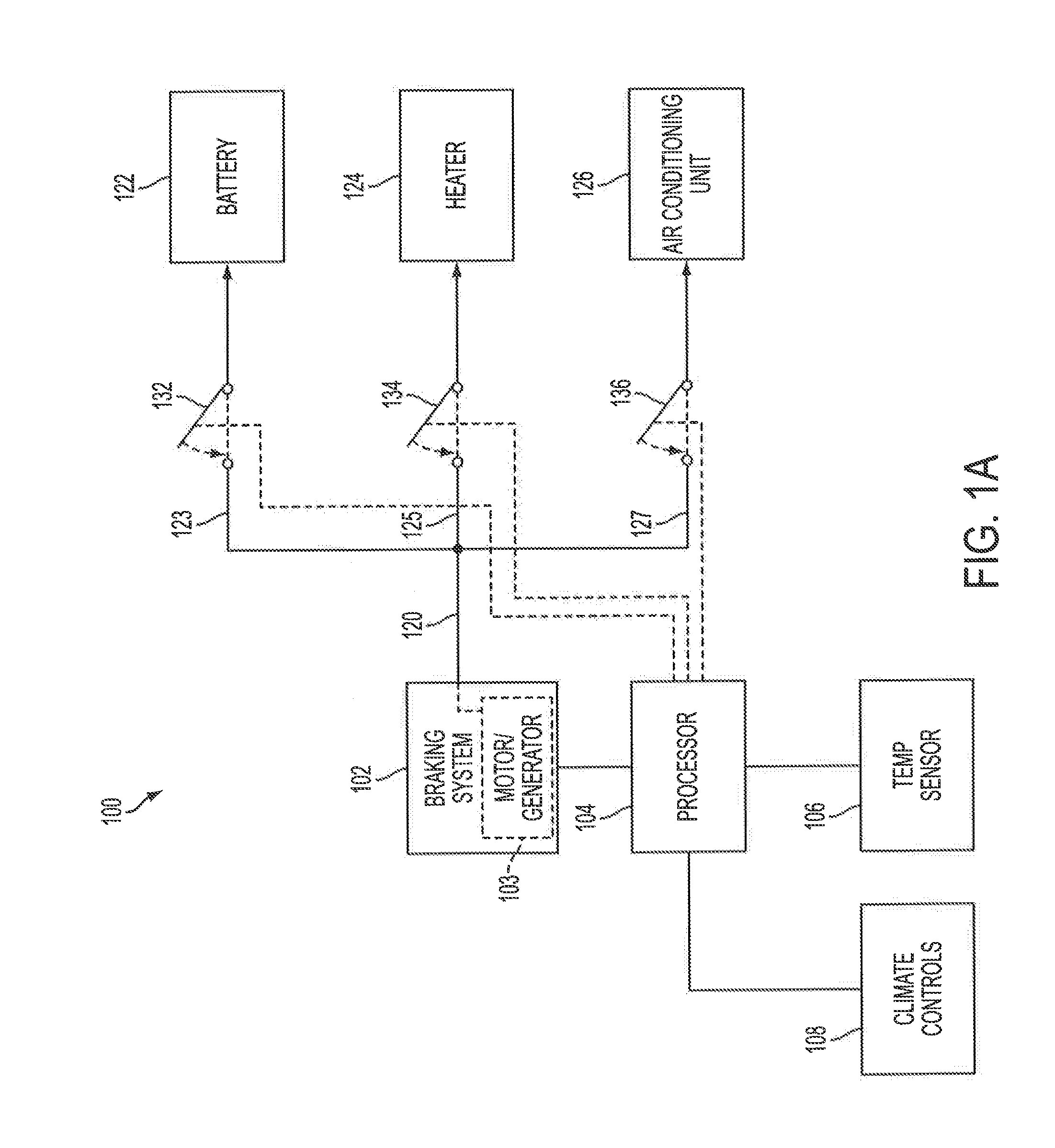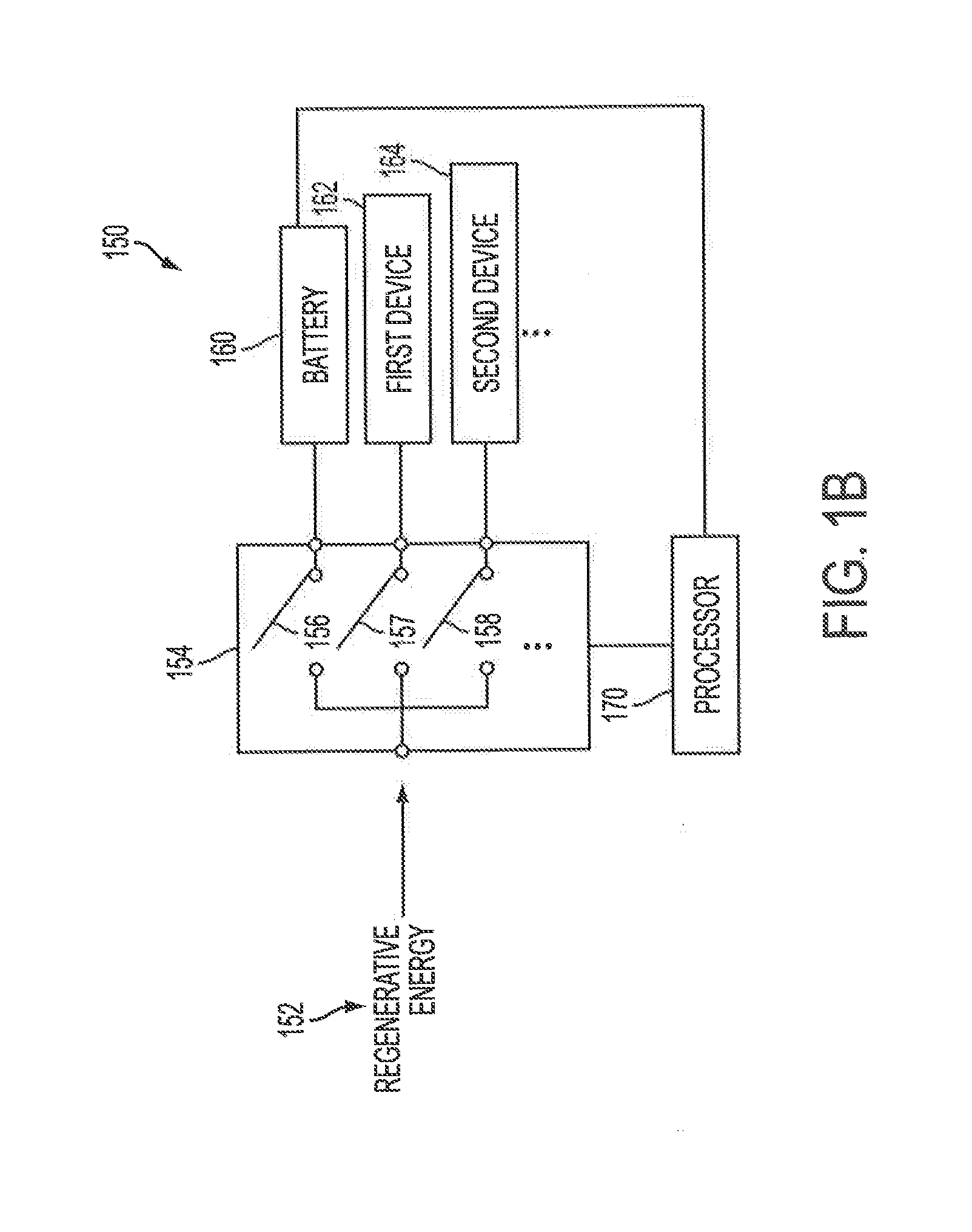Diversion of energy from regenerative braking
a technology of regenerative braking and energy, applied in the direction of automatic control system, battery/fuel cell control arrangement, instruments, etc., can solve the problems of increasing electricity costs for owners of such vehicles, electric vehicles often have a significantly reduced driving range when operating on electrical energy, and vehicles that cannot travel substantially less than recharge intervals
- Summary
- Abstract
- Description
- Claims
- Application Information
AI Technical Summary
Benefits of technology
Problems solved by technology
Method used
Image
Examples
Embodiment Construction
[0017]Referring to FIG. 1A, a block diagram is shown of a regenerative braking system 100 for a vehicle. The regenerative braking system 100 utilizes diversion of energy functionality in order to transmit or propagate energy to various components or devices of the regenerative braking system 100 of the vehicle, as discussed in greater detail herein. By diverting this regenerative energy to the vehicle components or devices, improved driveability results due to a maintained or substantially constant deceleration rate. The regenerative braking system 100 also allows such energy to be utilized by alternative components or devices if or when a specific component or device cannot currently use the provided energy. In addition, energy usage may also be more effectively utilized when directly transmitted to one or more components instead of first charging a battery and then discharging the battery for powering the one or more components.
[0018]The regenerative braking system 100 includes a ...
PUM
 Login to View More
Login to View More Abstract
Description
Claims
Application Information
 Login to View More
Login to View More - R&D
- Intellectual Property
- Life Sciences
- Materials
- Tech Scout
- Unparalleled Data Quality
- Higher Quality Content
- 60% Fewer Hallucinations
Browse by: Latest US Patents, China's latest patents, Technical Efficacy Thesaurus, Application Domain, Technology Topic, Popular Technical Reports.
© 2025 PatSnap. All rights reserved.Legal|Privacy policy|Modern Slavery Act Transparency Statement|Sitemap|About US| Contact US: help@patsnap.com



